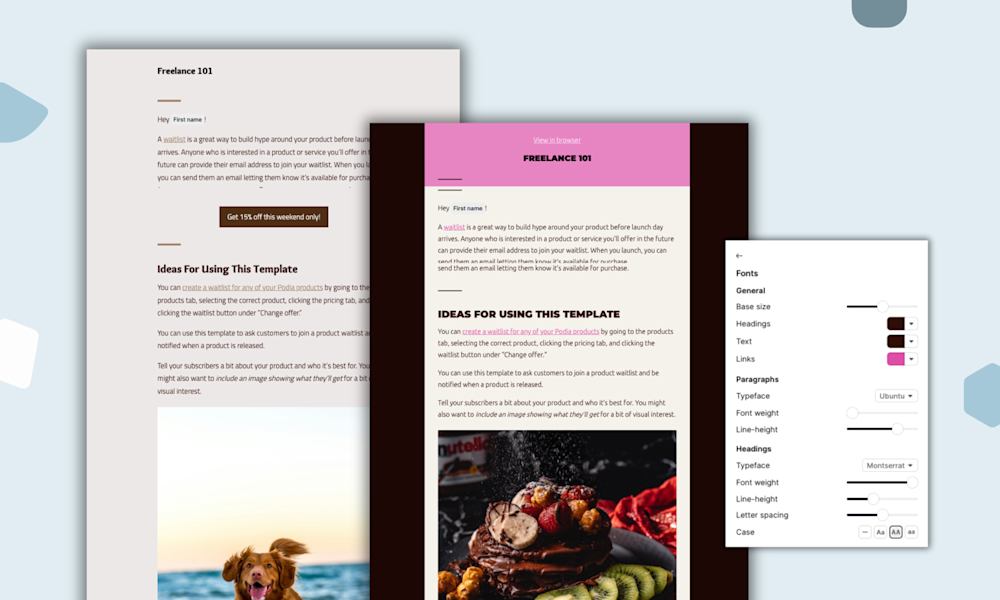You’ve spent hours painstakingly crafting a newsletter for your subscribers.
Finally, the time comes to press send, but nothing happens.
Hardly anyone opens it, let alone clicks through your links.
It’s dispiriting and makes you feel like that hard work was for nothing.
But the good news is that lifting your email open rates is easier than you think.
In this guide, we’ll flag up some of the things that went wrong and how you can fix them to improve your open rate. Soon you’ll be sending email marketing newsletters your subscribers can’t wait to open.
Your subject lines aren’t working
Subject lines are small but mighty; in just a few words, they can convince your reader to open your newsletter.
35% of people open messages based on the subject line alone, regardless of whether they’ve read the newsletter before or recognize the person’s name.
Look through your inbox, including your promotions tab, and you’re likely to see a wide variety of subject lines. Some will be long, others short, some with emoji or not. Here’s a snapshot of mine.

From reading around online, you might feel pressure for your email subject lines to be witty or mysterious. You might even think you have to turn them into clickbait for them to work.
But in reality, the best-performing subject lines tend to be descriptive rather than trying too hard to be clever.
Take headhunter Tom Sorensen’s subject lines, which are a mixture of description and intrigue.
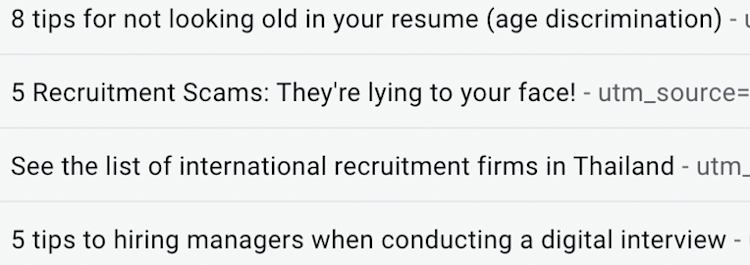
You know at a glance what the emails will contain. Tom also uses numbers to encourage you to open. Numbers in headlines are like candy for our brains: we like them, and they increase open rates and engagement.
The catch is that you have to be honest for them to work — don’t promise one thing in your headline and deliver another with your content.
An alternative approach is to optimize your subject lines with emoji.
Emoji are a divisive topic, and depending on the emoji, they can lead to your lowest or highest open rates.
Essentially, it’s all about context. If you’re going to use an emoji, keep it to one, and make sure it’s emphasizing the point of your subject line. Avoid it if the emoji is unrelated to your topic, as it could cause confusion.
For example, “Free social media calendar 🍇” or “🐶 Software update 3.1” are a bit disjointed. They might make sense to you, but out of context, they’ll look odd to an outsider.
FRIDA uses emoji thoughtfully in their subject lines, with each emoji directly related to the subject.

For example, the headphones emoji helps readers know the email will include music before they’ve thoroughly read the subject line.
Asking a question in your subject line is another option to help your email marketing metrics. Questions can increase your open rate by 10% compared to other subject lines. Use them to make your reader want to know the answer.

Ojuolape’s Mind Nodes newsletter uses a clever combination of questions and pre-headers to intrigue the reader.
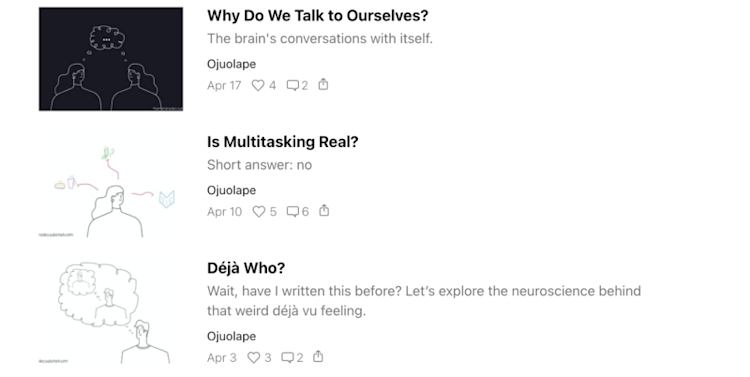
A pre-header is the text you see next to a subject line in your inbox. In most email newsletter providers, such as Constant Contact or Campaign Monitor, you can customize it.
Ojuolape’s subject lines and pre-headers work as a back and forth. She doesn’t answer the question in the pre-header but instead adds intrigue. “Short answer: no” makes you want to find out what the longer answer is.
Creating the right combination of subject line and header is one thing. Being sure they can be read across all devices is another. That’s where tools like TestSubject come in handy. Enter your subject line and header to check how it’ll look across popular mobile devices.
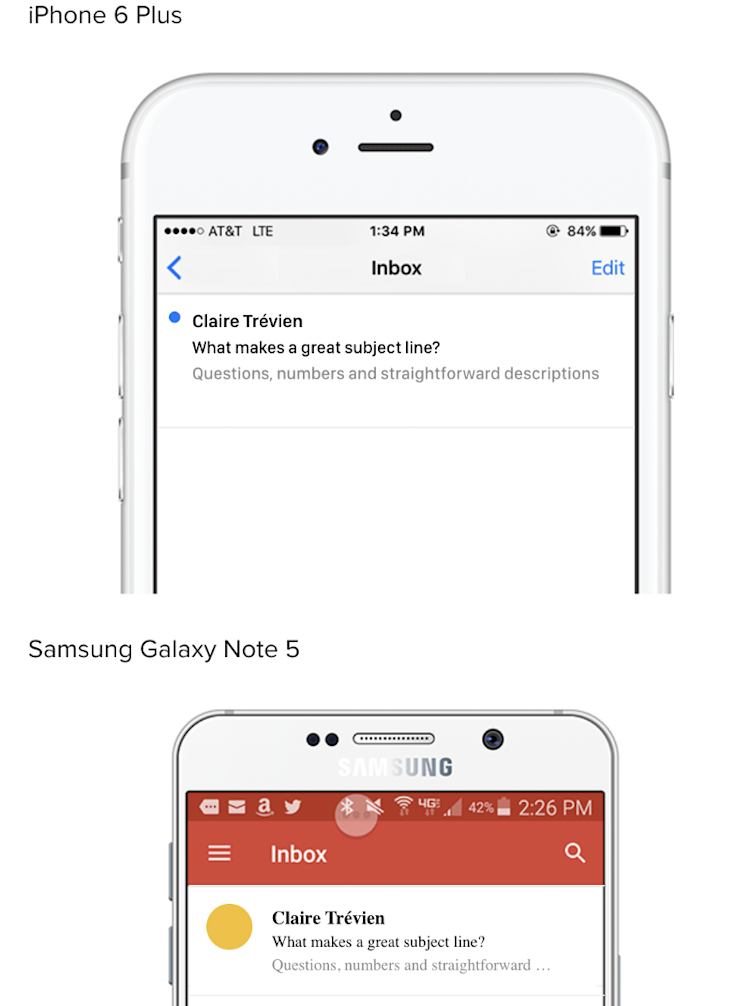
From testing it out, I know that my pre-header of choice is too long for some mobile devices, so it’d be a good idea to reduce it.
Try this Email Subject Line Tester too before you hit send. It’ll highlight any issues with it, including whether it’ll be flagged as spam.
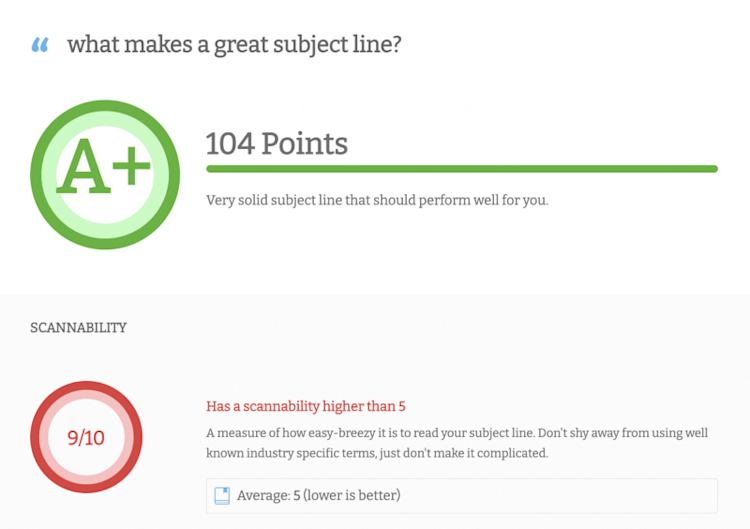
Questions, emoji, numbers, and descriptions are all tried and tested to increase email open rates with your subject lines. But subject lines alone might not be the reason your emails aren’t getting opened.
A good email open rate can also be linked to how often you send your newsletter out.
You don’t have a schedule for your newsletter
Did you send your last newsletter three months ago?
We’ve all been there. Being consistent with your emails is difficult — it takes time and energy that we don’t always have.
But if you establish a consistent schedule for your newsletter, you’ll see your average open rates increase over time.
Email marketing benchmarks vary as to the correct number of emails to send per month, but basically, it has to be realistic for you.
If you can cope with sending out a weekly newsletter without neglecting your other work, then choose that. If that’s too much, once a month works too.
Only you can decide what’s achievable and make a habit out of sending it.
In a year and a half, Anne-Laure Le Cunff grew her subscriber list to 25,000. This is a result she attributes to consistency, both in frequency and in content:
“In the early days, all that matters is to build the habit and to be consistent so you can find your voice and define your value … That’s why I believe consistency is the most efficient strategy for writing a newsletter: focus on producing quality content.”

Creating a template for your newsletter can help you to send them out more regularly. For example, small poetry publisher The Emma Press organizes its newsletters in sections (e.g., “We’re reading”, “Thoughts from our readers”).
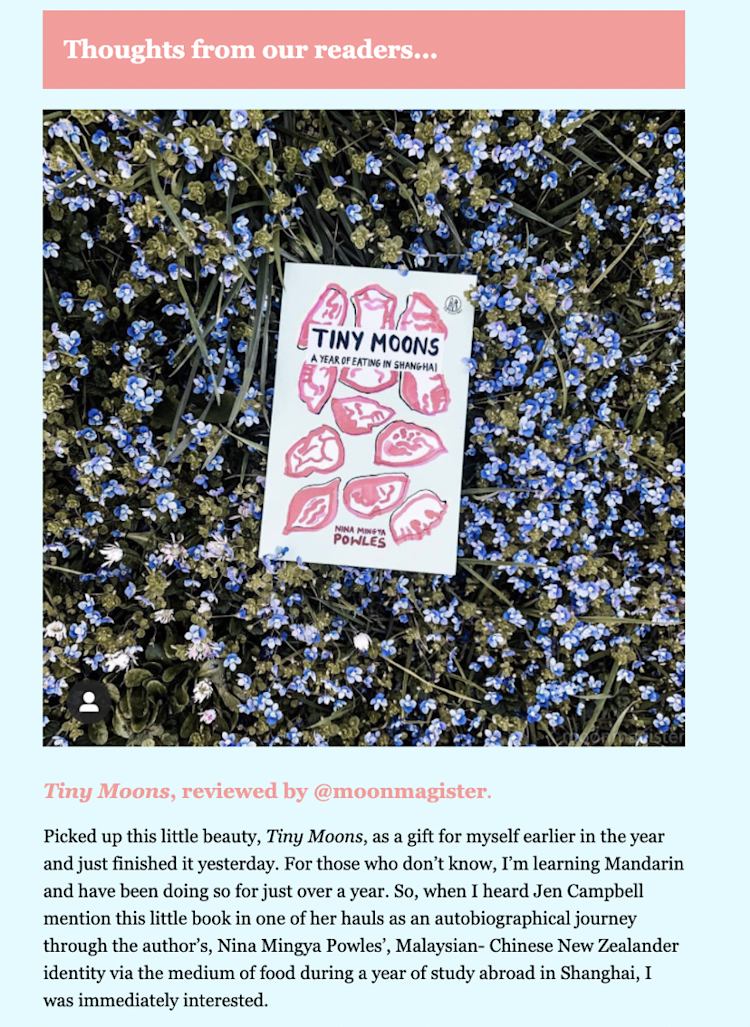
Having clear sections like this can help you save time, as you have a bunch of buckets that you simply need to fill up with content.
Here’s the gist:
Send your newsletter regularly, and your subscribers will start to notice it, and look forward to it.
But it’ll be easier for your subscribers to expect it if it arrives at the perfect time.
Your emails aren’t landing at the right time of day
Picking the perfect time and day for sending your newsletter can be tricky.
There are so many benchmarks and marketing statistics out there to choose from.
GetResponse’s study suggests that the best open rates are on Fridays, and the best click-through rates are Tuesdays. Other email service providers (ESP) believe Wednesdays are the best day to send.

In terms of time, there’s also a lack of consensus. The middle of the night is generally considered a bad time, but early mornings are good.
Bear in mind that your competitors have also read the same benchmarks so if you’re all sending emails out on a Tuesday early in the morning, your average email newsletter will get lost in the mix.
The answer isn’t clear-cut — what works for another newsletter might not be the best day or time for your email recipients. And, of course, you might have subscribers living in different time zones.
Your best option is to test different times and days to see whether a clear winner emerges.
If your newsletter’s open rate is below your industry average, then it’s certainly worth experimenting with the timing. In the education & training industry, the average open rate is 23.42%.

A/B testing at different times will provide you with more precise answers. A/B testing is when you send out two versions of an email to see which one performs better. In this case, you’d send your email at different times to different segments of your email subscribers.
You can test your email marketing campaigns by timing with tools like Mailchimp.

There’s another possibility looming, and it’s even more important than the when — it’s the who. Are you sending your newsletter to the right people?
Your email list doesn’t have your ideal readers
It’s normal for a newsletter to be initially populated by friends and family. But let’s face it, are they your ideal customer?
The reason for your low open rate could be that your email list doesn’t have the right people on it yet.
Don’t worry, this is entirely normal and can be solved. Building an email list from scratch doesn’t have to be painful.
One tactic for building your list with the right audience is to create a lead magnet.
Lead magnets are a gift you offer your readers in exchange for their permission to email them. 50% of marketers using lead magnets reported a high conversion rate.
Lead magnets are a way of segmenting your audience by their interests. For example, you can create a segment in your email list for everyone who’s downloaded your digital marketing ebook. You then know that’s a topic that interests them.
And the more segmentation you can do, the better. Segmented emails can increase your click-through rate (CTR) by 74%.
Your lead magnet will vary depending on your business, and it has to be useful to them. So if you’re a real estate agent, a checklist of what to look for in a house visit makes sense, whereas a recipe for pasta might not.
You can find lots of ideas for lead magnets here.
The Mums at Work Network offers several free resources to help mothers market their business efficiently. One of them is a 2021 printable planner, a valuable tool for busy mothers to help them plan and set goals.
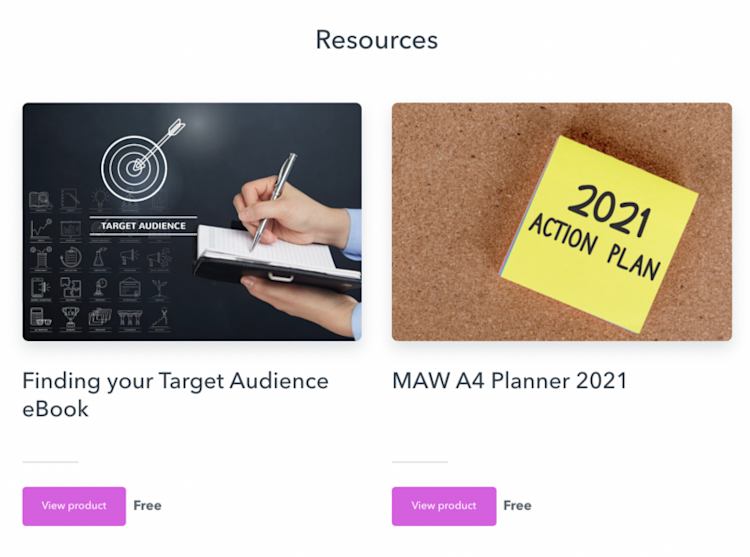
As you sign up to receive the planner, you can opt-in to their newsletter. It’s crucial to keep sign-ups optional so that you’re sure that everyone on your list really wants to be there (it keeps you GDPR compliant too).
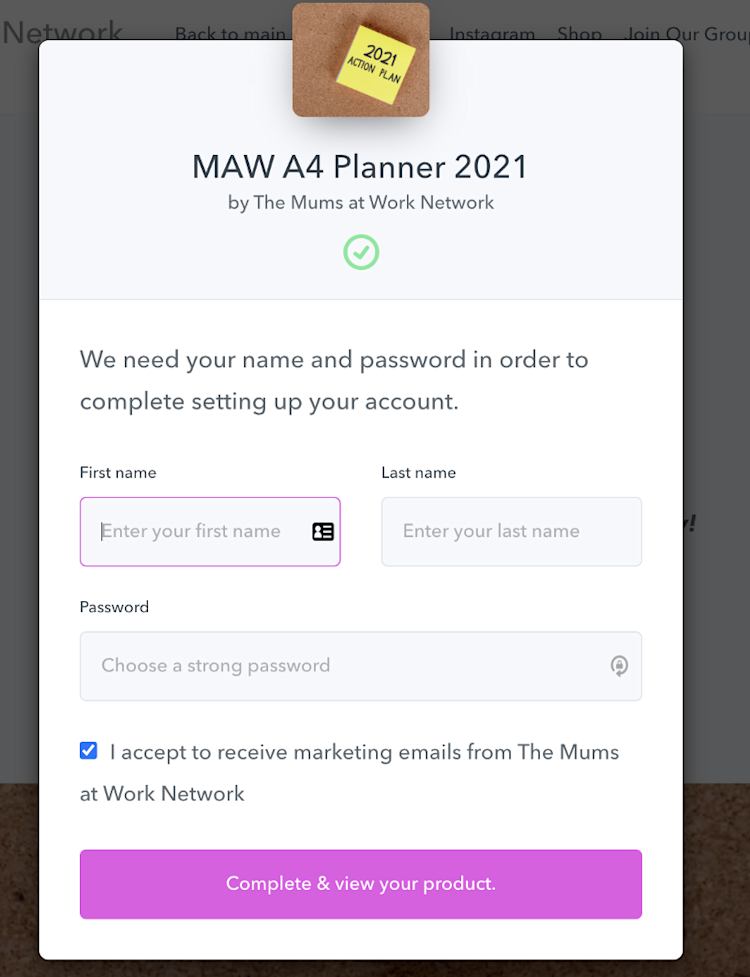
Basically, it’s better to have multiple small, segmented audiences who are genuinely interested in what you have to offer than one huge list of family, friends, and random folk.
Of course, if your perfect email list can’t see your emails, that’s an urgent problem to resolve.
Your emails aren’t getting delivered
Here’s an obvious fact: if your emails aren’t getting delivered, they aren’t getting read. 17% of emails worldwide, sent by real people, fail to land in inboxes every year.

You’d be surprised at what can get you flagged as spam and prevent your emails from being delivered. It can include:
-
Too many images compared to text.
-
Too many misspelled or dead email addresses on your list.
-
Not sending emails consistently. For instance, sending one email every three months then sending 50 in a day.
-
Subscribers aren’t opening your emails.
-
Your content seems “spammy”.
We’ve already looked at email frequency further up, so let’s focus on some other fixes to improve your email deliverability.
Favor text-based over image-based newsletters
Reduce your images and focus on creating text-driven newsletters instead.
Clean text-based emails will increase the deliverability of your emails.
This is why Podia’s email marketing tool uses a simple interface. Every email sent through our platform can be easily read on any device.
For example, here’s the start of The Storyteller’s Cottage’s most recent message.
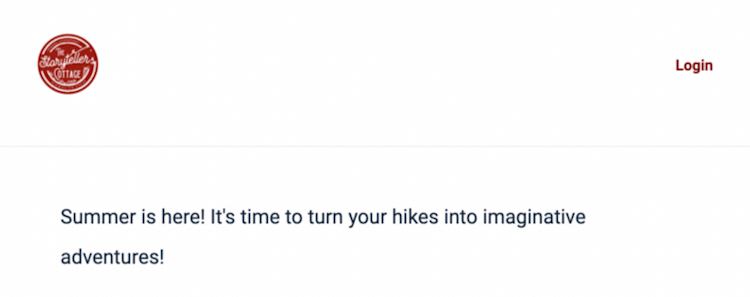
And yes, being mobile-friendly will also help with your deliverability. 85% of people use their smartphones to access their inbox, so if your newsletter doesn’t load properly, they’re more likely to flag it as spam or delete it.
Make your life easier by using a platform built for deliverability. If you’d like help to choose the best email marketing service provider, we’ve created a guide.
Check your email content doesn’t go to the spam folder
It can be surprising to see what can get your email flagged as spam.
There are many words and expressions that can trigger spam filters. Try to be sparing with them if you can, especially in promotional emails where expressions like “limited offer” and “order now” are frequent.
Some words (of many) to avoid:
-
Act now
-
Clearance
-
Important information regarding
-
Offer expires
-
Satisfaction guaranteed
-
Visit our website
-
No strings attached
-
You are a winner!
You can also quickly check if your newsletter passes the spam filters with this free tool by Mail Tester. Forward your test newsletter to their address, and they’ll run a deliverability test on it.

A score and a report will be generated, showing what you can do to solve any issues.
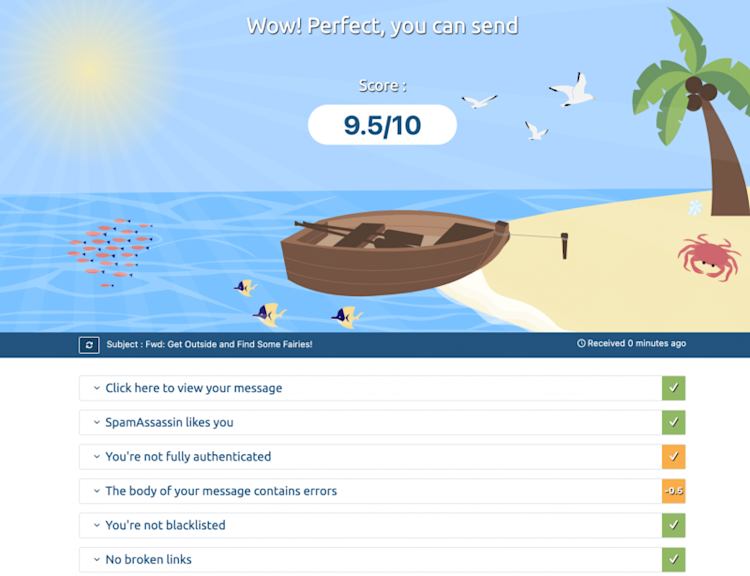
Going through their list should help improve your newsletter’s chances of landing in inboxes.
Set the right expectations with your subscribers
You’ve built a brilliant list of subscribers, but they might not be fully aware of what they’ve signed up for. They might not know how often you’ll be sending emails or what the content will be.
It’s best to make that clear before they subscribe. This will reduce your unsubscribe rate and limit the risks of being flagged by them as spam.
Mark Manson’s landing page for his newsletter does a great job of setting up expectations. In three paragraphs, you know what you’ll get and when.
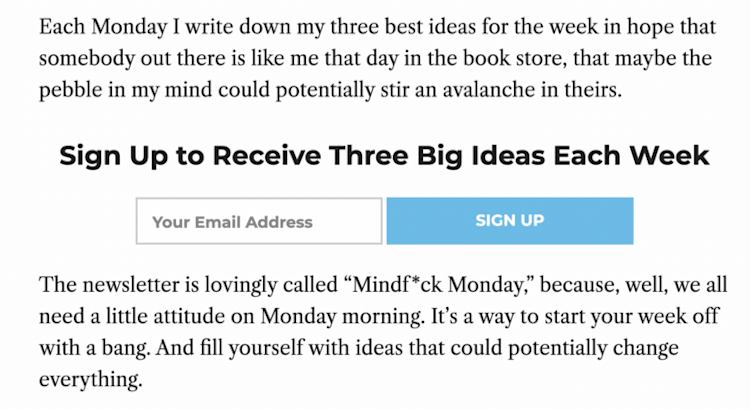
He also adds this great addendum about how your information will be used. It reassures his readers that they won’t get spammed and their information will be protected.

Per GDPR and CAN-SPAM rules, subscribers must give active consent to receive your newsletter, so it’s essential to clarify how you’ll use their information to contact them.
And, best of all, this will increase their trust, which is the most valuable thing there is.
Ensure your email list is clean
Another way of ensuring your subscribers really want your newsletter is to turn on a double opt-in function.
This is when subscribers receive an email asking them to confirm their subscription.
For example, here’s Meaningful Motion UI’s first opt-in when I chose to sign up for their lead magnet.

And then, here’s their second opt-in, as a confirmation email. It’s what’s known as a double opt-in, as the subscriber has to say yes twice.
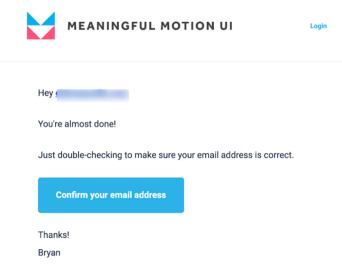
Having a double opt-in will also reduce your bounce rate. A bounce rate is when your emails get returned to you. Sometimes that’s because email addresses are misspelled.
You can clean your email list to reduce soft and hard bounces with this free tool by JitBit. A soft bounce is when your email couldn’t temporarily land in their inbox, a hard bounce is permanent.
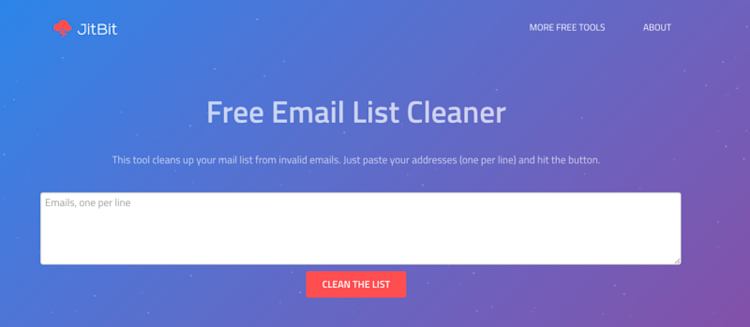
Essentially:
If your emails aren’t coming through, it might take time to get out of the spam house, but it’s achievable. Focus on your text, get your content checked for spam, and build a list that’s enthusiastic about receiving your emails.
That way, you can grow your newsletter at a pace that suits you.
Create newsletters your readers can’t wait to read
Low open rates are disheartening, especially when you’ve just launched a newsletter.
Bear in mind our advice to keep going in the right direction:
-
Rephrase your subject lines to be descriptive. Numbers and questions will also increase your newsletter’s chances of being opened.
-
Set yourself a schedule for sending out your newsletter. Whether it’s weekly or monthly, it needs to be sustainable for you.
-
Experiment to find the perfect time and day to send your newsletter.
-
Focus on quality rather than quantity when building your email list. Lead magnets are the ideal way to attract your perfect customers.
-
It can be surprisingly easy to get your newsletter flagged as spam. Keep a clean email list and be transparent with your subscribers about what they’ve signed up for.
-
Text-based emails are easy to read on all devices and less likely to be viewed suspiciously by spam filters.
Don’t give up, everyone needs to start somewhere, and the only way is up. You’ll be collecting higher open rates in no time.
